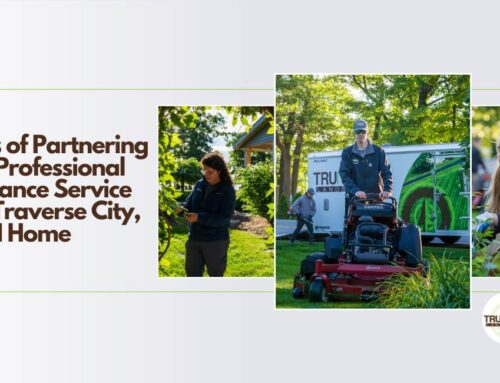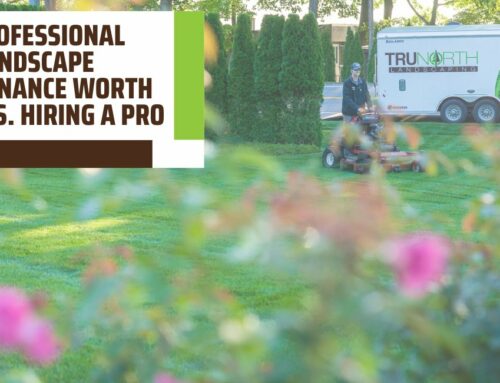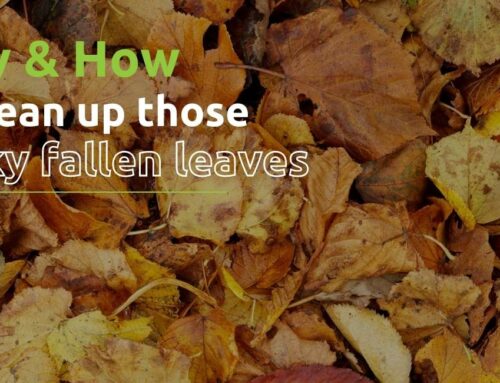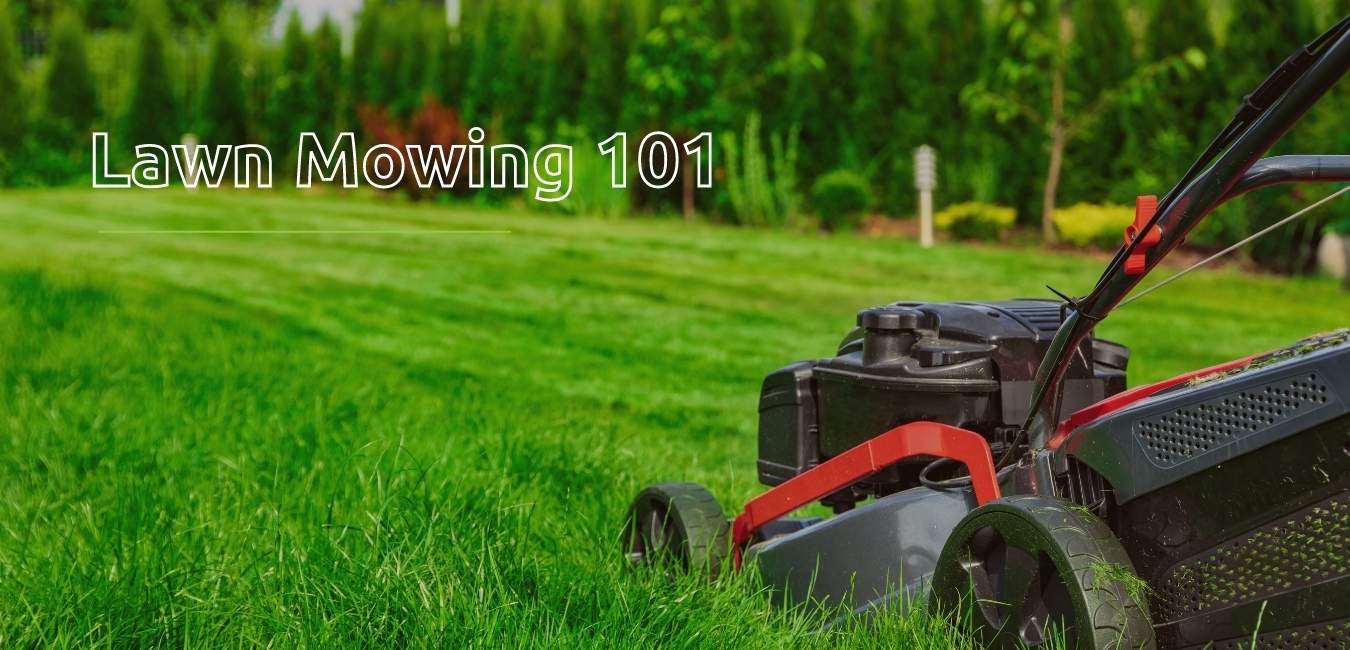
Mowing the lawn seems like a pretty simple task, right? You get out your mower, turn it on, and start cutting. Out of the many outdoor tasks, mowing the lawn seems pretty self-explanatory.
While cutting the grass seems simple, keeping it green, thick, bug-free, disease-free, and weed-free, is not always so easy. Surprisingly, many of these problems lead back to improper mowing techniques. Improper mowing can leave your lawn struggling to survive.
Learning how to mow your lawn correctly, or having experts mow for you, can help grow a turf that is healthy, drought-tolerant, and thick enough to crowd out weeds. Let’s look at 6 mowing tips to help your grass grow more resilient.
1. Mow Height
The idea that the shorter you cut your grass the better is flawed. While cutting your lawn to a lower height each mow may cut down on how frequently you need to mow, it is not healthy.

Since grass blades are actually leaves, cutting them low causes extreme stress. When grass is left a little longer, there is more surface area for the plant (your grass) to soak up the sun and begin the photosynthesis process. Consistently cutting your grass too short can actually lead to a weak root system as well. Short grass not only causes brown or yellow spots on your lawn, but it also leaves your grass open to disease, weed, and insect invasion.
Grass that is cut too short leads to weed invasion and drought/heat damage. Generally, never remove more than 1/3rd of the grass blades during any one cutting. Allow for all grass to grow taller during the summer and if there is a drought.
2. Mow Frequency
During peak season, it is recommended to cut your grass every 5-7 days. Grass that becomes too long is difficult to cut and creates more work because clippings have to be bagged or disposed of (instead of mulching them back in). Also, too long grass attracts weeds, bugs, and critters.
If there is a lot of rain and your grass has grown quickly, obviously it is acceptable to mow a little sooner than you may have planned.
3. Mow Patterns
The beautiful criss-cross mowing patterns you see in professionally mowed lawns are not just for looks. Cutting in the same direction or pattern creates ruts in your yard. The soil compacts and can prevent grass from growing as well as it could.

To avoid ruts, simply switch up which way you mow each week. Try horizontal, diagonal, and vertical mow patterns in alternating frequencies so that your grass has a chance to recover well after each cut.
4. Mow Time
The time of day you mow your grass can have an impact in certain situations. On extremely hot days, we recommend skipping mowing all together. Cutting during the peak heat hours can actually leave your lawn damaged. If a storm recently came through, and the grass is wet, we suggest postponing your mowing. Wet grass can leave the lawn damaged, your mower clogged, or the lawn looking just plain sloppy.
Other than these special situations, the time of day you mow your grass doesn’t really matter.
5. Mower Maintenance
Just like any other blade, your lawnmower blade dulls over time. A dull blade results in a jagged cut on the blade of grass, which can lead to turf diseases and pests, as well as a less green look to your grass. Just like a cut that we get on our hand can allow germs in, a jagged, wounded grass can allow disease in.
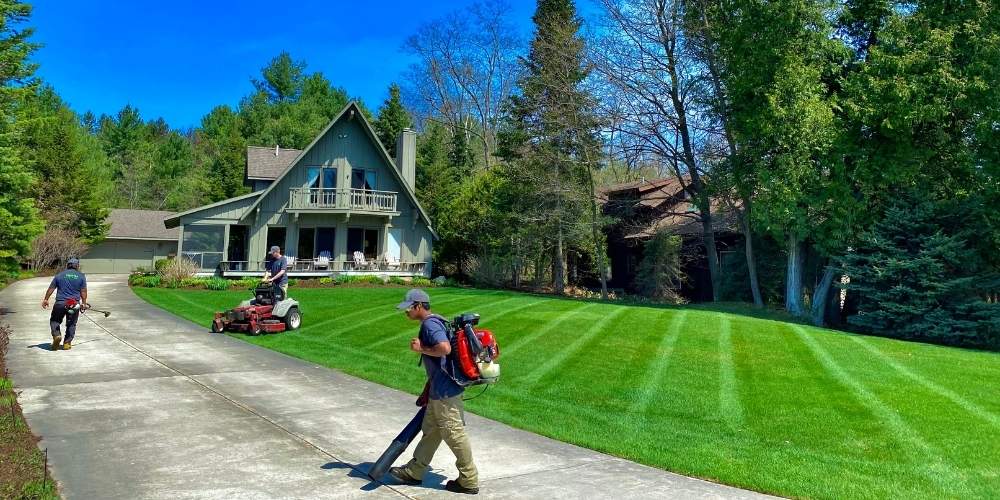
Having your blades sharpened at least once a year twice is recommended. It may be wise to have an extra blade on hand, so your lawn can always receive the best cut possible. Obviously, avoid mowing over branches, stones, or any other items that may further dull your blade.
6. Try Mulching
Allowing your grass clippings to go back into the lawn, instead of a bag, is commonly referred to as ‘mulching’ the lawn. It is very healthy for your lawn as long as the lawn has been cut frequently.
The grass clippings help to fertilize and feed your lawn. If you plan to do this frequently, it may be wise to purchase a mulching blade for your mower, so the pieces of grass are cut smaller.
Consider Hiring a Professional to Mow Your Grass
While mowing is certainly a task many homeowners and business owners can conquer safely, it may be easier to hire a professional. In order to do it yourself, you need to purchase and maintain a lawn mower and its’ blade, including buying gas and oil to feed your mower each season. You also need a significant amount of time if your mower is small or your yard is large.
Issues like forgetting to do a fall clean up or not watering your grass properly can certainly contribute to an ugly lawn, improper mowing practices are commonly a major issue in lawn health. Professionals have both the experience and the equipment to ensure your grass gets a beautiful trim each time. Blades are sharpened on a regular schedule and team members are trained so that your grass is picture-perfect after we leave.
If getting outside to cut your grass is a task you really enjoy, try out these tips to improve your mowing routine and help your grass flourish. If you’d rather hand lawn care over to a professional, we’d love to help! At TruNorth Landscaping, we typically only offer full-service lawn maintenance packages, meaning we provide mowing, trimming, edging, blowing, fertilization, weed control, aeration, and overseeding if needed. We believe that your investment in your grass should truly pay off, and full-service maintenance plans ensure your grass gets exactly what it needs!
Need some help maintaining your lawn in Grand Traverse or Leelanau County, MI? If so, meet with our team of experts, choose a solution to improve your property, and get ready to sit back, relax, and enjoy your beautiful outdoor space.
Get started today with a consultation!
Want tips and tricks for your lawn & landscaping?
Sign Up For Our Free Quarterly Newsletter
We take your personal information very seriously. We will not share any of the information you provide with any 3rd parties. Provided information will be used specifically to contact you in regards to your inquiry.

